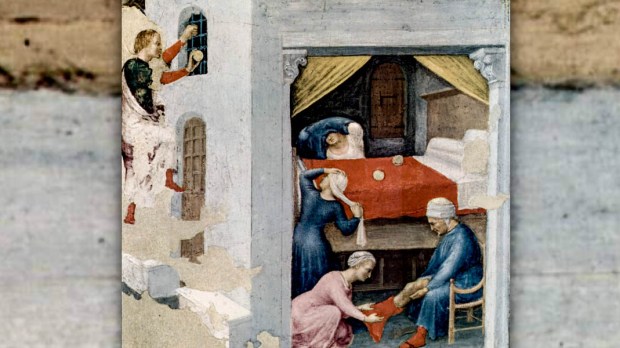Lenten Campaign 2025
This content is free of charge, as are all our articles.
Support us with a donation that is tax-deductible and enable us to continue to reach millions of readers.
The famous Christmas poem, ‘Twas the night before Christmas, succinctly describes the age-old practice of hanging stockings by the fireplace and gives an accurate account of the origins of the tradition.
“The stockings were hung by the chimney with care, In hopes that St. Nicholas soon would be there.”
One of the most famous stories of St. Nicholas revolves around the concern he had for three girls who did not possess a dowry to get married. The father of the girls was afraid that they would not be able to find husbands and may even be sold into prostitution. When Nicholas heard of the situation, he endeavored to make it right by providing the dowries.
Wanting to be an anonymous donor, Nicholas threw a bag of gold coins through the window of the family’s house, which landed in a stocking (or shoe in some accounts) that was left by the fire to dry. He did this three times for the three girls and thus saved them from future shame.
Over time the story was passed down to each generation and when the Germanic countries were Christianized, they adopted the custom in line with a previously held pagan ritual. According to different historians, “Children would put carrots, straw and even sugar in their boots as food for Sleipnir, Odin’s flying horse, and as a way to repay the gratitude, Odin would replace the stocking stuffers of children with treats such as candies.”
The two traditions melded together and eventually became a custom for children on the eve of St. Nicholas’ Day on December 6. As the celebration of Christmas developed and the Santa Claus figure arose, the stockings on December 6 were transferred to Christmas Eve and Santa Claus came on that night to do what was previously done on December 6.

Read more:
Where did candy canes come from?

Read more:
Did Coca-Cola invent the look of modern-day Santa Claus?

